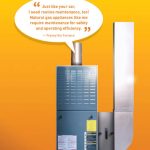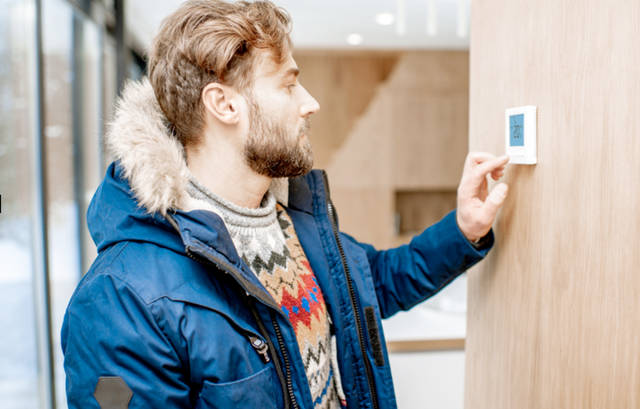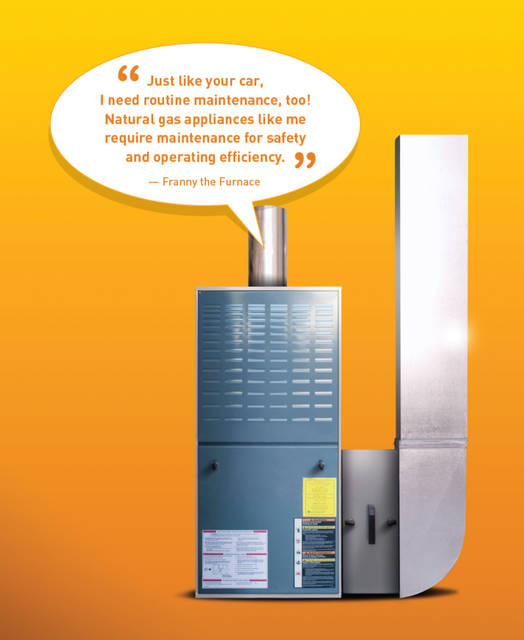9 simple ways to troubleshoot your furnace before calling a repair technician


Share this post:
Brrrrr.
There is nothing worse than waking up in a freezing house in the middle of a cold winter’s night — except maybe, knowing you’ll have a big, expensive furnace bill to pay later that day!
But don’t fret. With a few do-it-yourself tips, you might be able to avoid those costly professional repairs (and those hours-long wait times) by troubleshooting and fixing your furnace yourself. You could be back snuggling under the covers in a toasty warm house in no time.
Here are nine things to check before you call your furnace repair technician:
1. Make sure power and gas are on
Not to sound too basic, but if you moved in over the summer and didn’t need heat, it’s possible you forgot to set up your account. Or, it could simply be a power outage causing the problems. Before you place a call for assistance, make sure both power and gas services are activated.
2. Replace your batteries
Some thermostats are wired to the house’s electrical system, but others rely on battery power. If your home’s thermostat runs on batteries, try replacing them with a fresh set. If the furnace comes on, you know the source of the problem.
3. Check your thermostat
Confirm that your thermostat is set to “HEAT.” It’s easy enough to accidentally bump the switch when cleaning. If it’s not set to “HEAT” your furnace may either appear to be blowing out cold air or it may appear not to be working at all. Also, keep in mind that the thermostat needs to be set to a temperature where the furnace will kick on. Try turning the dial to 90 just to be certain. Then try cutting the power for 30 seconds before turning the system back on. This will reset the processor in some units.
4. Check your circuit breaker and emergency switch
Take a look at your home’s breaker panel, and find the circuit that controls the furnace. If you see the breaker has been tripped and is now in the “OFF” position, you need to reset it. Keep in mind that breakers trip for safety by alerting you that the system is pulling more power than it should, so if you reset the breaker and it trips again, you should call your landlord or an electrician.
5. Replace the air filters
Clogged filters are one of the leading causes of furnace issues. Your furnace must work harder to compensate for the blockage, and it could cause your heat exchanger to overheat and shut off. Newer furnaces may shut off even earlier, before more damage is caused. If your furnace isn’t working or if it seems weak, change your air filter. Locate the filter: It usually looks like a grate. Give it a quick check for dust and soot particles: Keep in mind, not all filters are transparent, even when new. Then change your filter: Make sure the furnace is off, and follow directions on the furnace or the filter for proper replacement.
6. Open the vents
Walk through your house and make sure nothing is blocking the vents. A curtain, piece of furniture, a basket of laundry or a box might be obstructing the vent and preventing heat flow.
7. Remove obstructions
Outdoor debris can suffocate a heating unit. Check outside for leaves, branches or trash that might have been sucked into the unit. As a rule-of-thumb, you should keep a three-foot radius around the unit clear from shrubs, plants or other obstructions.
8. Check the pilot light
Pilot lights can blow out fairly easily, so many will have specific lighting instructions posted on the unit. Consult your unit or owner’s manual for the manufacturer’s instructions. If you’re unsure, it might be time to call an expert.
9. Know the age of your furnace
Furnaces can run for many years, but none of them will last forever. If your unit has long exceeded its manufacturer’s warranty period, it might be time for an efficient upgrade. Try to locate a service sticker on the unit or paperwork in your files that can tell you if age might be a contributing factor.
If you’ve gone through this simple checklist and still have problems with your furnace, consider calling a technician to get your system back up and running.
Important Note: If you smell gas, do not attempt to locate the leak. Leave your home, and call the 24-hour emergency number for Peoples Natural Gas at 1-800-400-4271 or your local emergency response number.
Sponsored by Peoples Natural Gas.



